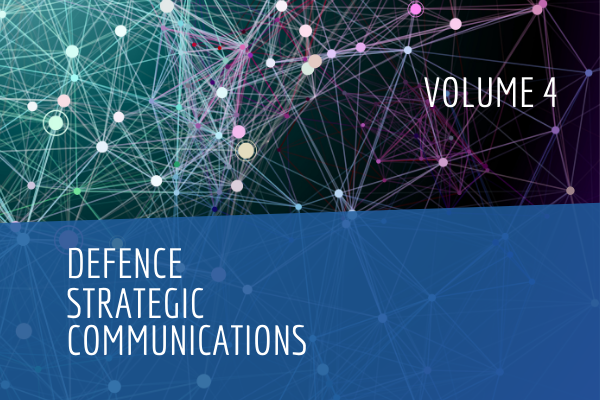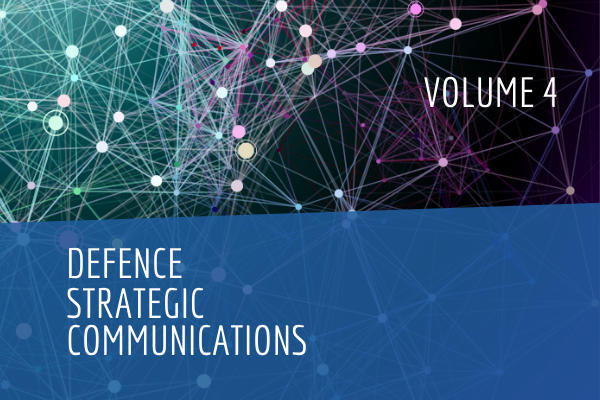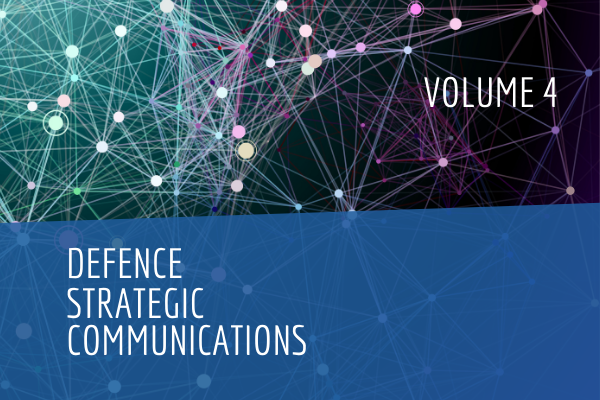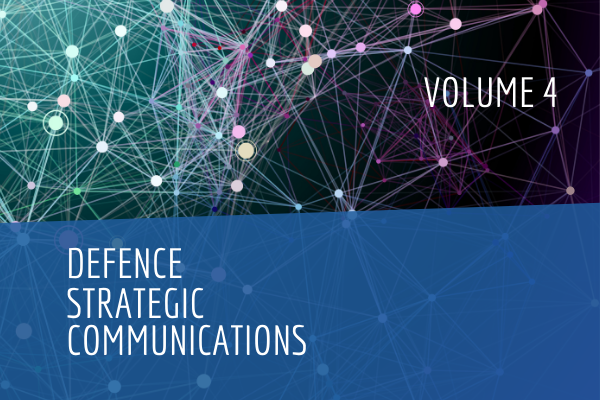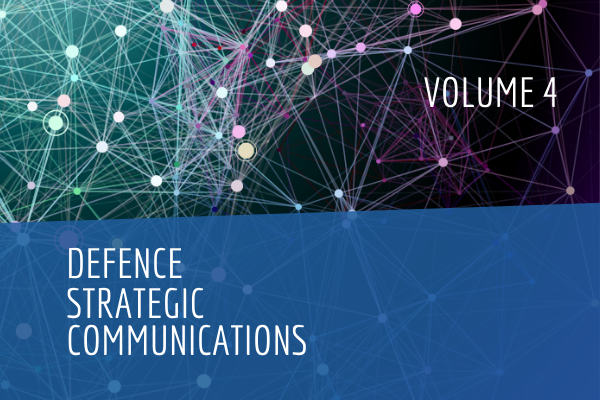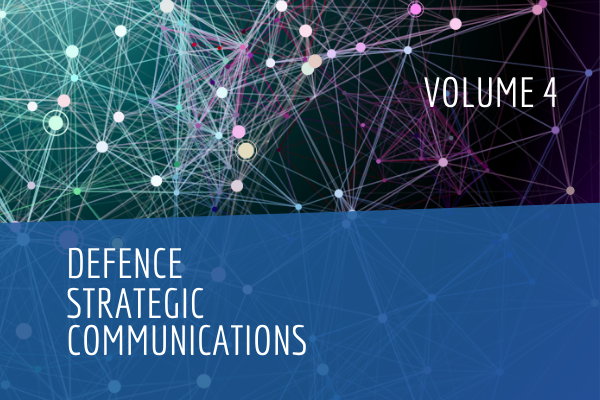Abstract
Humour entertains, but can also be used for propaganda purposes if it reaches a large audience and influences their emotional response to specific topics. The article focuses on humour as a comprehensive concept: elements of humour that serve a propagandistic function, including shared knowledge, the target audience, the perception of humour, the functions of humour, and the communication process, are identified and analysed in New Year’s Eve programming on Russian television.
Keywords—communication, functions of humour, humour, media settings, perception of humour, shared knowledge
About the authors
Žaneta Ozoliņa is a Professor of International Relations in the Department of Political Science at the University of Latvia. She researches Transatlantic relations and European security, as well as strategic communication in international relations.
Jurģis Šķilters is a Professor and Chair of the Laboratory for Perceptual and Cognitive Systems at the Faculty of Computing, University of Latvia. His research focuses on spatial cognition, formal and cognitive modelling of meaning, visual perception, and socio-collaborative cognitive processes.
Sigita Struberga is a PhD candidate and lecturer of International Relations in the Department of Political Science at the University of Latvia. Her research focuses on Russia, Russian Foreign Policy, EU- Russia Relations, Public Diplomacy and strategic communications.
Bibliography
Adams, Bruce, Tiny Revolutions in Russia: Twentieth Century Soviet and Russian History in Anecdotes and Jokes (London, New York: Routledge, 2005).
Apte, Mahadev L., Humor and Laughter: An Anthropological Approach, (Ithaca: Cornell University Press, 1985).
Apter, Michael J. (ed.)., Motivational Styles in Everyday Life: A Guide to Reversal Theory (Washington DC: American Psychological Association, 2001).
Baumgartner, Jodi and Jonathan S. Morris, ‘The Daily Show Effect: Candidate Evaluations, Efficacy, and American Youth’, American Politics Research 34 (3), (2006): 341–367.
Benton, Gregor, ‘The Origins of the Political Joke’ in Chris Powell and George Paton (eds.), Humor in Society: Resistance and Control (London: MacMillan, 1988), pp. 33–55.
Berger, Arthur Asa, An Anatomy of Humor (New Brunswick, London: Transaction Publishers,1993).
Berger, Arthur Asa, Blind Men and Elephants: Perspectives on Humor, (New Brunswick, NJ: Transaction Publishers, 1995).
Berger, Jonah, ‘Word of Mouth and Interpersonal Communication: A Review and Directions for Future Research’, Journal of Consumer Psychology 24 (4), (2014): 586–607. PAYWALL
Bratman, Michael E., Shared Agency: A Planning Theory of Acting Together (New York, Oxford: Oxford University Press, 2014).
Carroll, Noël, Humor: A Very Short Introduction (Oxford: Oxford University Press, 2014).
Clark, Herbert H., Arenas of Language Use (Chicago, IL: University of Chicago Press and Stanford, CA: Center for the Study of Language and Information, 1992).
_________, Using language (Cambridge: Cambridge University Press, 1996).
_________, and Susan E. Brennan, ‘Grounding in Communication’ in Lauren B. Resnick, John M. Levine, and Stephanie D. Teasley (eds.), Perspectives on Socially Shared Cognition (Washington DC: American Psychological Association, 1991), pp. 127–49.
Coulson, Seana, Semantic Leaps: Frame-shifting and Conceptual Blending in Meaning Construction (Cambridge: Cambridge University Press, 2001).
Critchley, Simon, On Humour (London, New York: Routledge, 2002).
Davis, Christie, ‘The Dog that Didn’t Bark in the Night: A New Sociological Approach to the Crosscultural Study of Humor’ in W. Ruch (ed.), The Sense of Humor: Exploration of a Personality Characteristic (Berlin, New York: Mouton de Gruyter, 1998), pp. 293–306.
Dixon, N.F., ‘Humor: A Cognitive Alternative to Stress?’ in Irwin G. Sarason and Charles D. Spielberger (eds.), Stress and Anxiety, Volume 7 (Washington DC: Hemisphere, 1980), pp. 281–89.
Finkenauer, Catrin and Bernard Rimé, ‘Socially Shared Emotional Experiences vs. Emotional Experiences Kept Secret: Differential Characteristics and Consequences’, Journal of Social and Clinical Psychology 17 (3), (1998): 295–318. PAYWALL.
Gorham, Michael S., After Newspeak: Language, Culture and Politics in Russia from Gorbachev to Putin (Ithaca and London: Cornell University Press, 2014).
Jacobs, Lawrence R., ‘Going Institutional: The Making of Political Communications’ in Kate Kenski and Karen Hall Jamieson (eds.), Handbook of Political Communication Theories (Oxford: Oxford University Press, 2014).
Jones, Jeffrey P., Entertaining Politics: Satiric Television and Political Engagement (New York: Rowman & Littlefield Publishers, 2010).
Kao, Justine T., Roger Levy, and Noah D. Goodman, ‘A Computational Model of Linguistic Humor in Puns’, Cognitive Science 40, Issue 5 (2016): 1270–85.
Knopf, Christina M., The Comic Art of War: A Critical Study of Military Cartoons, 1805–2014, with a guide to artists, (North Carolina: McFarland, 2015).
Koller, Marvin R., Humor and Society: Explorations in the Sociology of Humor (Houston: Cap and Gown, 1988).
Kuiper, Nicholas A., ‘Humor and Resiliency: Towards a Process Model of Coping and Growth’, Europe’s Journal of Psychology 8 (3), (2012): 475–91.
Leano, Jessica, ‘The Agenda-Setting Power of Saturday Night Live’, The Elon Journal of Undergraduate Research in Communications 5 (1), (2014): 81–89.
Lewis, Paul, Christie Davies, Giselinde Kuipers, Rod A. Martin, Elliot Oring, and Victor Raskin, ‘The Muhammad Cartoons and Humor Research: A Collection of Essays’, HUMOR International Journal of Humor Research 21(1), (2008): 1–46. PAYWALL.
Lichter, S. Robert, Jodi C. Baumgartner, and Johnathan S. Morris, Politics is a Joke! How TV Comedians Are Remaking Political Life (New York: Westview Press, 2015).
List, Christian and Philip Pettit, Group Agency: The Possibility, Design, and Status of Corporate Agents (Oxford: Oxford University Press, 2011).
Martin, Rod A., The Psychology of Humor: An Integrative Approach (Burlington: Elsevier Academic Press, 2007).
Morreall, John, ‘Humor and the Conduct of Politics’ in Sharon Lockyer and Michael Pickering (eds), Beyond a Joke: The Limits of Humour (London: Macmillan, 2005).
Ozoliņa, Žaneta and Solvita Denisa-Liepniece, ‘Anatomy of the Use of Humor in Political Propaganda Campaigns’ in Resisting Foreign State Propaganda in the New Information Environment: The Case of the EU, Russia, and the Eastern Partnership Countries (Riga: Center for East European Policy Studies, 2016), pp. 153–72.
Paton, George E.C., Chris Powell, and Stephen Wagg (eds), The Social Faces of Humour: Practices and Issues (Aldershot, England: Arena, 1988).
Pencis, Jānis, Jurģis Šķilters, Līva Brice, Monika Kreile, and Uldis Bojars, ‘Collaborative Recall Effects and Extended Identity Generation in Twitter Communication—the Case “to remember”, “to recall”, and “to forget” ’ in M. Ockenfeld, I. Peters, and K. Weller (eds), Social Media und Web Science. Das Web als Lebensraum. 2. DGI-Konferenz, 64. Jahrestagung der DGI. Dusseldorf 22–23.03. (DGI-Tagungen, Band 16) (Frankfurt am Main: Deutsche Gesellschaft fuer Informationswissenschaft und Informationspraxis e.V., 2012) (pp. 19–31).
Peters, Kim, Yoshihisa Kashima, and Anna Clark, ‘Talking About Others: Emotionality and the Dissemination of Social Information’, European Journal of Social Psychology 39 (2), (2009): 207–22. PAYWALL.
Raskin, Victor, Semantic Mechanisms of Humor, (Dordrecht: D. Reidel Publishing Company, 1985).
Raskin, Victor (ed.), The Primer of Humor Research (Berlin: De Gruyter, 2008).
Ratner, Kyle G., Ron Dotsch, Daniel H.J. Wigboldus, Ad van Knippenberg, and David M. Amodio, ‘Visualizing Minimal Ingroup and Outgroup Faces: Implications for Impressions, Attitudes, and Behavior’, Journal of Personality and Social Psychology 106, (2014): 897–911. PAYWALL.
Ritchie, L. David, ‘Frame-Shifting in Humor and Irony’, Metaphor and Symbol 20, № 4, (2005): 275–94. PAYWALL.
Salmela, Mikko and Michiru Nagatsu, ‘Collective Emotions and Joint Action’, Journal of Social Ontology 2 (1), (2016): 33–57. PAYWALL.
Šķilters, Jurģis, ‘Semantic Prominence and Semantic Segmenting: On the Relations Between Cognitive Semantics and Gestalt Theory’ in Hellmuth Metz-Göckel (ed.), Gestalttheoretische Inspirationen—Anwendungen der Gestalttheorie:
Handbuch zur Gestalttheorie, Band 2 (Wien: Verlag W. Krammer, 2011), pp. 167– 88.
Tajfel, Henri, ‘Intergroup Relations, Social Myths and Social Justice in Social Psychology’ in Henri Tajfel (ed.), The Social Dimension, Vol. 2, (Cambridge: Cambridge University Press, 1984), pp. 695–715.
Tanis, Martin, ‘Online Social Support groups’ in Adam N. Joinson, Katelyn Y. A. McKenna, Tom Postmes, and Ulf-Dietrich Reips (eds.), The Oxford Handbook of Internet Psychology (Oxford: Oxford University Press, 2007), pp. 139–53.
Tajfel, Henri and J.C. Turner, ‘The Social Identity Theory of Intergroup Behaviour’ in Stephen Worchel and William G. Austin (eds.), Psychology of Intergroup Relations, 2nd edition (Chicago: Nelson Hall, 1986), pp. 7–24.
Tholas-Disset, Clementine and Karan A. Ritzenhoff, Humor, Entertainment, and Popular Culture during World War I (New York: Palgrave Macmillan, 2015).
Vaillant, George E., ‘Ego Mechanisms of Defense and Personality Psychopathology’, Journal of Abnormal Psychology 103, (1994): 44–50. PAYWALL.
Young, Dannagal G., ‘Theories and Effects of Political Humor: Discounting Cues, Gateways, and the Impact of Incongruities‘ in Kate Kenski and Kathleen Hall Jamieson (eds.), Handbook of Political Communication Theories (Oxford: Oxford University Press, 2014).
Yus, Francisco, ‘Humor and the Search for Relevance’, Journal of Pragmatics 35, Issue 9 (2003): 1295–331.
Zillmann, Dolf and Joanne R. Cantor, ‘A Disposition Theory of Humor and Mirth’ in Antony Chapman and Hugh Foot (eds.), Humor and Laughter: Theory, Research, and Applications (London: Wiley, 1976), pp. 93–115.
Ziv, Avner, Personality and Sense of Humor (New York: Springer, 1984).

